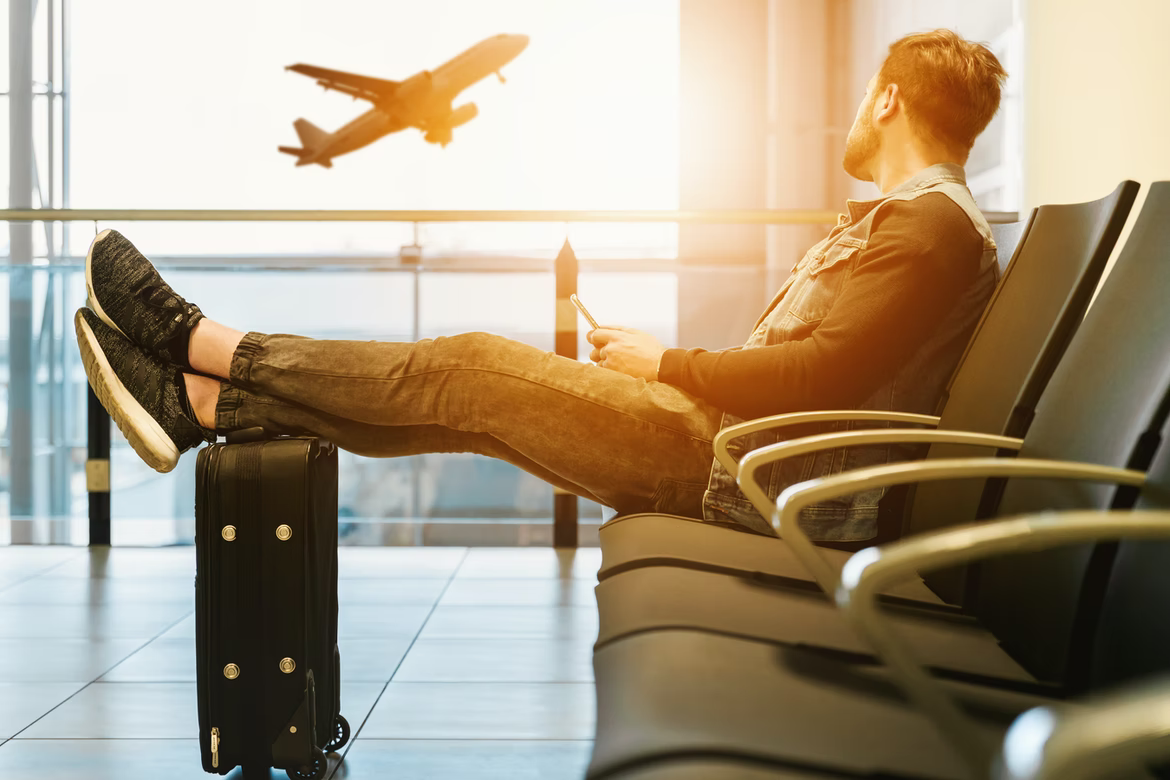With the holiday season just around the corner, airport terminals are about to be busier than ever. According to Hopper, the number of people traveling this holiday season is predicted to rise above pre-pandemic measures. If you plan to hit the road, it’s important to prepare your body for a long day of sitting and find ways to alleviate back pain during holiday travel.
READ ALSO: Arizona No. 15 most at-risk state for porch pirates during holidays
READ ALSO: Here’s how to keep your holiday spending in check
Whether it’s a long car ride up north or a flight somewhere tropical, here are some tips to help you stay physically sound during holiday travel.
1, Take a breath and relax
Relaxing before a trip is necessary for the body and the mind. The weeks leading up to a trip can be stressful and pre-trip anxiety is normal for most people. Taking deep, controlled breaths before you get in the car or on a flight will improve air flow within your body and brain, helping you calm nerves, reduce stress levels and start your vacation off on the right foot.
2. Get the blood flowing
Road trips and long flights involve a good deal of sitting with little-to-no physical activity. Remaining in the same position for an extended period can lead to blood clots and other health issues. When possible, stand up, walk around, stretch and loosen the body. This can be done during bathroom breaks, filling up at a gas station, or any time you start to feel pain or stiffness.
3. Hydrate, hydrate, hydrate
Staying hydrated seems simple but can easily slip the mind. On average, adults need 10 to 16 cups of water per day to keep the body temperature regulated, joints lubricated and organs functioning properly. Being well-hydrated also improves sleep quality, cognition, and mood. If you’re traveling for the better part of the day and find yourself avoiding liquids so you don’t have to use the bathroom, you’re setting yourself up for pain later down the line.
4. What to do when your back aches
Back pain is often caused by a condition called spinal stenosis. Our day-to-day lives include a lot of sitting, staring a phones or televisions and not nearly enough physical movement. Because of this, our spines are constantly put in a compromised position which can lead to spinal stenosis. If traveling in a car or on a plane has caused increased pain and discomfort, consider the following.
Roll on a stability ball or foam roller
When you use a foam roller or stability ball, your body weight is used against the roller to apply direct pressure on trigger points. Typically, effective treatment begins by rolling back and forth over a stiff or sensitive area for between 30 and 60 seconds. This method is the only safest way to stabilize your back.
Avoid cracking joints
Anytime you crack your own back or neck joint, you move in a forward motion. This is extremely dangerous and can cause more pain or even permanent damage to your spinal cord. If you feel your back needs an adjustment, always seek a professional.
Be proactive about maintaining spinal alignment
Recognizing the fact that your spine is extremely mechanical can change the way you think about maintaining healthy spinal discs. Being proactive about maintaining the alignment of the vertebra associated with each spinal disc can help preserve the anatomy of the spine and prevent pain. Be cognizant of your posture when sitting and standing, neck angles when looking at your phone or reading a book and strengthen your back and shoulder muscles through exercise.
To go more in-depth about spinal care and how to alleviate back pain, FIX24 Joint Biomechanics is hosting a free seminar on Nov. 15 at 6:30 p.m. where we’ll cover a variety of back and spine-related issues. To register, visit fix24wellnessstudio.com or call (480) 419-1500.
Wherever your destination takes you this year, we hope you have a healthy journey there.
Author: Dr. Michael Robb is Chiropractic Physician and Founder of FIX24 Joint Biomechanics. Driven by passion and the need to revive structural healthcare, Dr. Robb studied a unique form of Chiropractic called, the Gonstead technique. Eventually, Dr. Robb opened his clinic in Scottsdale and called it FIX24 Joint Biomechanics. This is where he developed and practiced his new system called “The FIX24 System”.




